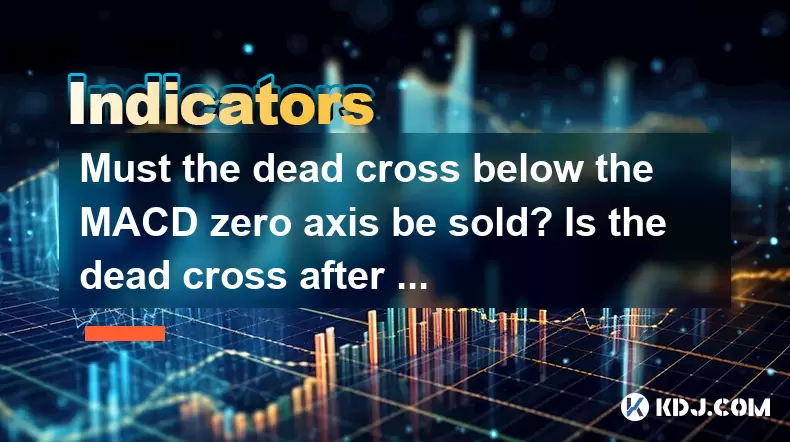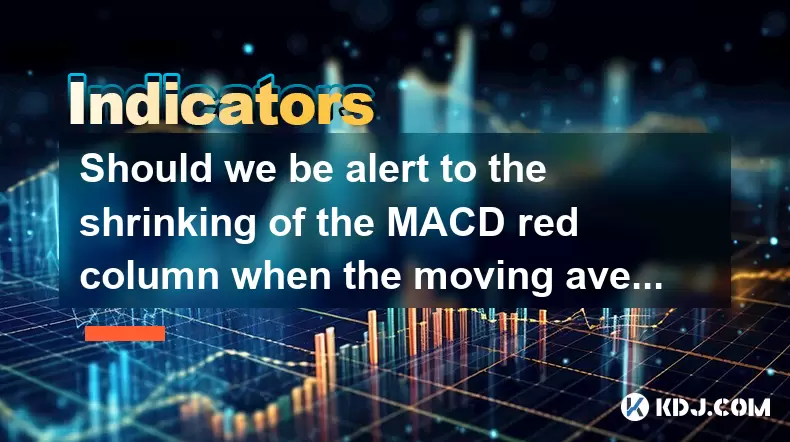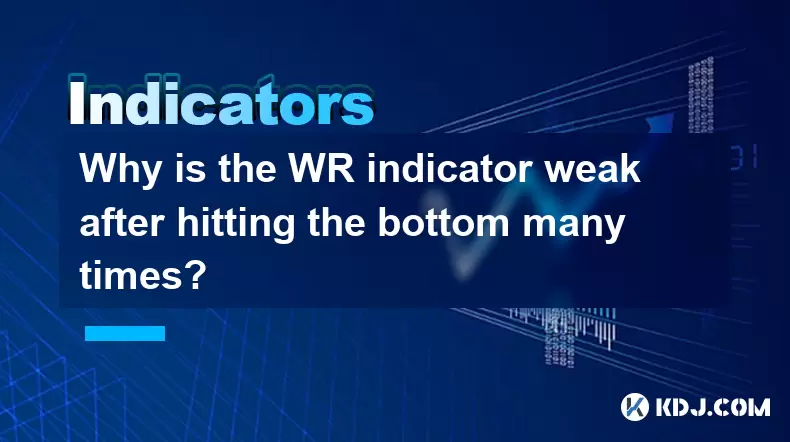-
 Bitcoin
Bitcoin $101,898.5005
-0.75% -
 Ethereum
Ethereum $2,258.1125
-1.07% -
 Tether USDt
Tether USDt $1.0004
0.01% -
 XRP
XRP $2.0178
-2.93% -
 BNB
BNB $624.0243
-1.53% -
 Solana
Solana $134.3298
-0.90% -
 USDC
USDC $0.9999
0.01% -
 TRON
TRON $0.2675
-2.05% -
 Dogecoin
Dogecoin $0.1538
-1.96% -
 Cardano
Cardano $0.5482
-1.11% -
 Hyperliquid
Hyperliquid $35.5636
5.45% -
 Bitcoin Cash
Bitcoin Cash $453.4902
-1.66% -
 Sui
Sui $2.5134
-2.97% -
 UNUS SED LEO
UNUS SED LEO $9.1292
1.77% -
 Chainlink
Chainlink $11.8457
-1.60% -
 Stellar
Stellar $0.2312
-2.73% -
 Avalanche
Avalanche $16.9721
0.29% -
 Toncoin
Toncoin $2.7549
-3.82% -
 Shiba Inu
Shiba Inu $0.0...01081
-1.10% -
 Litecoin
Litecoin $80.8250
-0.71% -
 Hedera
Hedera $0.1374
0.21% -
 Monero
Monero $305.4827
-2.36% -
 Ethena USDe
Ethena USDe $1.0006
0.00% -
 Dai
Dai $1.0000
-0.01% -
 Polkadot
Polkadot $3.2085
-3.12% -
 Bitget Token
Bitget Token $4.0845
-3.13% -
 Uniswap
Uniswap $6.3353
-1.63% -
 Pi
Pi $0.5085
-0.70% -
 Pepe
Pepe $0.0...08913
-3.82% -
 Aave
Aave $232.7090
-0.58%
Must the dead cross below the MACD zero axis be sold? Is the dead cross after oversold more risky?
A dead cross below the MACD zero axis signals a bearish trend, but traders should consider market context and volume before deciding to sell.
May 23, 2025 at 01:15 pm

The Moving Average Convergence Divergence (MACD) indicator is a popular tool among cryptocurrency traders for analyzing market trends and making informed trading decisions. One of the critical signals provided by the MACD is the dead cross, which occurs when the MACD line crosses below the signal line. This event often prompts traders to consider selling their positions. However, the question arises: must the dead cross below the MACD zero axis be sold? Additionally, is a dead cross after an oversold condition more risky? Let's delve into these aspects in detail.
Understanding the MACD Indicator
The MACD is composed of three components: the MACD line, the signal line, and the histogram. The MACD line is calculated by subtracting the 26-period Exponential Moving Average (EMA) from the 12-period EMA. The signal line is typically a 9-period EMA of the MACD line. The histogram represents the difference between the MACD line and the signal line, providing a visual representation of the momentum.
The Dead Cross and Its Implications
A dead cross occurs when the MACD line crosses below the signal line, indicating a potential bearish shift in the market. This signal is often interpreted as a sell signal, suggesting that it might be time to exit long positions. However, the context in which the dead cross occurs is crucial. A dead cross below the zero axis can be particularly significant because it indicates that the short-term momentum (12-period EMA) is now below the long-term momentum (26-period EMA), and both are in negative territory.
Must the Dead Cross Below the MACD Zero Axis Be Sold?
While a dead cross below the zero axis is a strong bearish signal, it does not mandate an immediate sell. Several factors should be considered before making a decision:
- Market Context: The overall market trend and other technical indicators should be evaluated. If other indicators also suggest a bearish trend, the dead cross might reinforce the decision to sell.
- Volume Confirmation: A significant increase in trading volume accompanying the dead cross can confirm the bearish signal, making it more reliable.
- Support Levels: Checking for nearby support levels can help determine if the price might bounce back or continue to decline.
- Risk Management: Traders should consider their risk tolerance and position size. If the potential loss is within acceptable limits, they might choose to hold the position to see if the market recovers.
Is the Dead Cross After Oversold More Risky?
An oversold condition occurs when an asset's price has fallen sharply and is considered to be trading below its intrinsic value. This is often indicated by the Relative Strength Index (RSI) falling below 30. If a dead cross occurs after an oversold condition, it can indeed be more risky for several reasons:
- False Signals: The market may be due for a rebound after being oversold, and a dead cross in this scenario could be a false signal. The price might quickly recover, leading to a missed opportunity for profit.
- Increased Volatility: Oversold conditions can lead to increased volatility, making the market more unpredictable. A dead cross in such an environment might lead to significant price swings, increasing the risk of losses.
- Emotional Trading: Traders might be more inclined to act impulsively after an oversold period, potentially leading to poor decision-making.
How to Analyze a Dead Cross Below the Zero Axis
To effectively analyze a dead cross below the zero axis, traders should follow these steps:
- Identify the Dead Cross: Confirm that the MACD line has indeed crossed below the signal line and that both are below the zero axis.
- Check Other Indicators: Use additional technical indicators like the RSI, Bollinger Bands, or Moving Averages to corroborate the bearish signal.
- Analyze Volume: Look at the trading volume to see if it supports the bearish move indicated by the dead cross.
- Evaluate Support Levels: Identify any nearby support levels that might halt the price decline.
- Assess Risk: Consider the potential risk and reward of holding versus selling the position.
Case Studies of Dead Crosses Below the Zero Axis
Let's look at a couple of hypothetical scenarios to illustrate how a dead cross below the zero axis might play out in the cryptocurrency market:
Scenario 1: Bitcoin (BTC) Dead Cross
Imagine Bitcoin's price has been in a downtrend, and the MACD line crosses below the signal line and both are below the zero axis. The volume is significantly higher than average, and the RSI is at 45, indicating neither oversold nor overbought conditions. In this case, the dead cross might be a reliable sell signal, as the market context and volume confirm the bearish trend.
Scenario 2: Ethereum (ETH) Dead Cross After Oversold
Suppose Ethereum's price has dropped sharply, and the RSI falls below 30, indicating an oversold condition. A few days later, the MACD line crosses below the signal line, and both are below the zero axis. The volume is not significantly higher, and there is a strong support level nearby. In this scenario, the dead cross might be a false signal, and holding the position could be more beneficial if the price rebounds.
Practical Steps for Trading a Dead Cross
When a dead cross below the zero axis occurs, traders can follow these practical steps:
- Monitor the Market: Keep a close eye on the price action and other technical indicators to confirm the bearish trend.
- Set Stop-Loss Orders: If deciding to hold the position, set a stop-loss order below the current price to limit potential losses.
- Consider Partial Selling: Instead of selling the entire position, consider selling a portion to reduce risk while still holding some for potential recovery.
- Stay Informed: Keep up with market news and events that might affect the cryptocurrency's price, as external factors can influence the effectiveness of technical signals.
FAQs
Q: Can a dead cross above the zero axis be considered a sell signal?
A: A dead cross above the zero axis is less significant than one below it because it indicates that the short-term momentum is still positive. However, if other indicators confirm a bearish trend, it might still be considered a sell signal.
Q: How can I differentiate between a false and a true dead cross signal?
A: To differentiate between a false and a true dead cross, consider the market context, volume, other technical indicators, and nearby support and resistance levels. A true dead cross is typically supported by high volume and other bearish indicators.
Q: Should I use the MACD indicator alone for trading decisions?
A: While the MACD is a powerful tool, it should not be used in isolation. Combining it with other indicators like the RSI, Bollinger Bands, and Moving Averages can provide a more comprehensive view of the market and help confirm trading signals.
Q: How often should I check the MACD for dead crosses?
A: The frequency of checking the MACD depends on your trading style. Day traders might check it multiple times a day, while swing traders might check it daily or weekly. It's important to find a balance that suits your trading strategy and time availability.
Disclaimer:info@kdj.com
The information provided is not trading advice. kdj.com does not assume any responsibility for any investments made based on the information provided in this article. Cryptocurrencies are highly volatile and it is highly recommended that you invest with caution after thorough research!
If you believe that the content used on this website infringes your copyright, please contact us immediately (info@kdj.com) and we will delete it promptly.
- DOGE Recovery Amid US-Iran Tensions: A Market Rollercoaster
- 2025-06-23 20:45:13
- Fiserv, PayPal, and Stablecoins: A New Era of Interoperability?
- 2025-06-23 20:45:13
- Hacken Token's Wild Ride: Minting Exploit and the Cryptocurrency Crash
- 2025-06-23 21:05:12
- Dogecoin, Cloud Mining, and Blockchain: A Meme's Evolution
- 2025-06-23 21:25:12
- Layer 1 Turmoil: CEO Ousted Amidst Scam Allegations
- 2025-06-23 21:05:12
- Solana's Stumble: Price Crash and Network Exodus?
- 2025-06-23 21:25:12
Related knowledge

What is the significance of the gap formed by the gap opening not being filled within five days?
Jun 23,2025 at 09:42pm
Understanding Gaps in Cryptocurrency TradingIn the world of cryptocurrency trading, a gap refers to a situation where the price of an asset jumps from one level to another without any trading activity occurring between those two levels. This often happens over weekends or holidays when the market is closed, and significant news or events occur that impa...

Does the second golden cross of MACD above the zero axis represent the continuation of strength?
Jun 23,2025 at 08:21pm
Understanding the MACD IndicatorThe Moving Average Convergence Divergence (MACD) is a widely used technical analysis tool in cryptocurrency trading. It consists of three main components: the MACD line, the signal line, and the histogram. The MACD line is calculated by subtracting the 26-period Exponential Moving Average (EMA) from the 12-period EMA. The...

Is it effective when the DIF line suddenly crosses the zero axis when the volume is shrinking and the market is trading sideways?
Jun 23,2025 at 07:29pm
Understanding the DIF Line in Technical AnalysisThe DIF line, or the Difference Line, is a critical component of the MACD (Moving Average Convergence Divergence) indicator, widely used in technical analysis across cryptocurrency and traditional financial markets. It represents the difference between the 12-period EMA (Exponential Moving Average) and the...

Should we be alert to the shrinking of the MACD red column when the moving average is arranged in a bullish pattern?
Jun 23,2025 at 08:14pm
Understanding the MACD Red Column and Its SignificanceThe Moving Average Convergence Divergence (MACD) is a widely used technical indicator in cryptocurrency trading. It consists of three main components: the MACD line, the signal line, and the MACD histogram (the red column). The red column represents the difference between the MACD line and the signal...

Why is the WR indicator weak after hitting the bottom many times?
Jun 23,2025 at 07:56pm
Understanding the WR Indicator in Cryptocurrency TradingThe Williams %R (WR) indicator is a momentum oscillator used by traders to identify overbought and oversold levels in the market. It ranges from 0 to -100, with readings above -20 considered overbought and below -80 considered oversold. In the context of cryptocurrency trading, where volatility is ...

Is the shrinking cross star after the historical high a signal of topping?
Jun 23,2025 at 05:56pm
Understanding the Shrinking Cross Star PatternIn technical analysis, candlestick patterns are essential tools for traders to predict potential price movements. One such pattern is the shrinking cross star, which appears as a small-bodied candle with long upper and lower shadows, indicating indecision in the market. When this pattern forms after an asset...

What is the significance of the gap formed by the gap opening not being filled within five days?
Jun 23,2025 at 09:42pm
Understanding Gaps in Cryptocurrency TradingIn the world of cryptocurrency trading, a gap refers to a situation where the price of an asset jumps from one level to another without any trading activity occurring between those two levels. This often happens over weekends or holidays when the market is closed, and significant news or events occur that impa...

Does the second golden cross of MACD above the zero axis represent the continuation of strength?
Jun 23,2025 at 08:21pm
Understanding the MACD IndicatorThe Moving Average Convergence Divergence (MACD) is a widely used technical analysis tool in cryptocurrency trading. It consists of three main components: the MACD line, the signal line, and the histogram. The MACD line is calculated by subtracting the 26-period Exponential Moving Average (EMA) from the 12-period EMA. The...

Is it effective when the DIF line suddenly crosses the zero axis when the volume is shrinking and the market is trading sideways?
Jun 23,2025 at 07:29pm
Understanding the DIF Line in Technical AnalysisThe DIF line, or the Difference Line, is a critical component of the MACD (Moving Average Convergence Divergence) indicator, widely used in technical analysis across cryptocurrency and traditional financial markets. It represents the difference between the 12-period EMA (Exponential Moving Average) and the...

Should we be alert to the shrinking of the MACD red column when the moving average is arranged in a bullish pattern?
Jun 23,2025 at 08:14pm
Understanding the MACD Red Column and Its SignificanceThe Moving Average Convergence Divergence (MACD) is a widely used technical indicator in cryptocurrency trading. It consists of three main components: the MACD line, the signal line, and the MACD histogram (the red column). The red column represents the difference between the MACD line and the signal...

Why is the WR indicator weak after hitting the bottom many times?
Jun 23,2025 at 07:56pm
Understanding the WR Indicator in Cryptocurrency TradingThe Williams %R (WR) indicator is a momentum oscillator used by traders to identify overbought and oversold levels in the market. It ranges from 0 to -100, with readings above -20 considered overbought and below -80 considered oversold. In the context of cryptocurrency trading, where volatility is ...

Is the shrinking cross star after the historical high a signal of topping?
Jun 23,2025 at 05:56pm
Understanding the Shrinking Cross Star PatternIn technical analysis, candlestick patterns are essential tools for traders to predict potential price movements. One such pattern is the shrinking cross star, which appears as a small-bodied candle with long upper and lower shadows, indicating indecision in the market. When this pattern forms after an asset...
See all articles
























































































